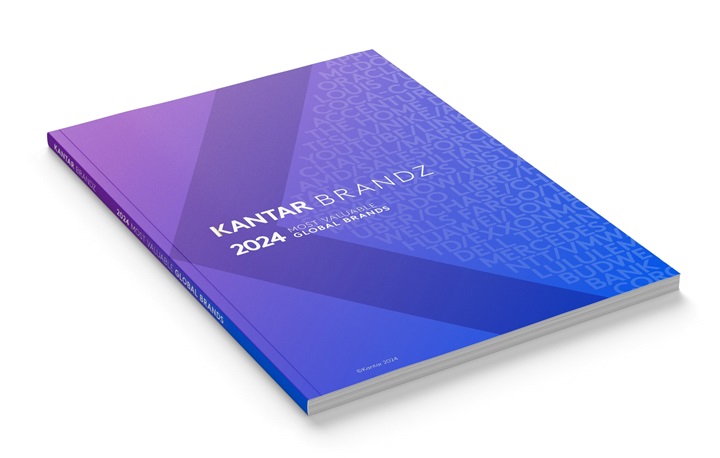Innovators find themselves in the perfect storm
Innovation is such an important lever for successful brands. Kantar BrandZ continues to inform us that brands that are Meaningful, Different, and perceived as Innovative afford better growth in the short term and the long term.
But today, innovators face a set of tough challenges - a perfect storm, one might say. First, our Kantar Worldpanel data tells us that, due to COVID-19, 2020 and 2021 saw 24% fewer new product development launches versus two years ago. Now, with three years’ worth of new products due to hit the market in 2022, innovators will have to work extra hard to make sure their breakthroughs are not lost in the shuffle.
What’s more, these innovations will have to compete in a world that’s being transformed by more than just the pandemic. According to Kantar’s chief futurist J. Walker Smith, the biggest disruptions of the coming era are going to be from climate change and social change. Already, consumers are demanding brands take action. In Kantar’s 2021 social sustainability study, it was found that 61% of consumers feel like sustainability isn’t their responsibility… Instead, they feel it’s up to businesses and producers.
The perfect storm for innovators doesn’t stop here. The pandemic has also accelerated digital transformation, with people increasingly shopping online. What this means is that innovations will have to make the case for their value not just in person, but on a smartphone screen.
Speaking of value, rising inflation and an increased cost of living in many markets means consumers will increasingly look to “trade down” - and at the same time, business will need to flex their portfolios and increase costs. This could be a good opportunity for innovation to play a role in unlocking new savings, but this will need to be done against the backdrop of our “perfect storm.”
What does it take to be an innovative brand?
Breakthrough innovations aren’t flavour extensions. They are going to require some serious reframing of your brand’s category and business. You may have to move away from more traditional short-term success metrics, because short-term thinking can keep some of the best disruptive ideas from ever making it out the innovation process.
Innovators should not worry, however. At Kantar, we understand how to nurture and develop meaningful and different innovations at pace against the backdrop of a changing world.
There are six key principles that should guide the innovator to success
- Firstly, it is important to adopt a “Learn, Test, and Learn” mindset. This means focusing on understanding and testing your critical assumptions and building confidence and momentum behind your ideas – through the funnel, but also out into market. We call it “Learn, Test, and Learn” for a reason. To really learn, brands must set up an iterative learning system to ensure that new knowledge stays within the business – while smart testing ensures that you can actually prove the benefit of investing in more breakthrough innovations.
- It is not enough to say you need to be consumer centric, you need to have really deep empathy for people and their context. Having a strong behavioural science lens will afford you better more meaningful insight. It will help you develop innovations that will be a frictionless and differentiated choice in market in this changing environment. Brands like Peloton and Fiit, for example, have certainly understood how to make exercise more accessible to people. Likewise, brands like Tesla have really understood how to make electric vehicles meaningful to people.
- Have a strong set of innovation metrics, but don’t forget to listen to the weaker signals as well. This might sound counterintuitive, but at the start of the innovation process there will be some weaker clues as to which ideas might afford the greatest success in market. For example, listen to the responses of the “future shaper” respondent: What ideas are they backing?
Also, when idea testing, look for the ideas that have a strong initial intuitive appeal. But also watch those ideas that afford better responses when people stop and think about them. Both these types of ideas have potential if you understand what is driving a consumer’s response. - Be brand centric when you innovate. Innovation is an important driver of brand power so don’t forget to ensure your innovation contributes to long term brand growth as you nurture it through the innovation process. Not all innovations are right for all brands, nor will they drive long term brand equity growth. Being brand centric will avoid these challenges.
- Execute effectively. Start planning earlier in the innovation process about how you intend to communicate your innovation and through which channels. It is also important to ensure you have a strong plan to monitor the innovation and comms in market to enable you to tweak and optimise accordingly.
Having early comms ideas means better minimum viable product testing. Secondly, for innovations that might involve a behaviour change, it enables you to think about the types of interventions you might need to implement beyond the innovation itself to drive effective change. We know from BrandZ data that those who are perceived as innovative spend 35% more on advertising. - The last but very important principle might seem a little more intangible on the surface, but we must “fuel the imagination.” Cited as an important factor in the future needs of the research industry. We must fuel the imaginations of those who are innovating, helping them to reframe and think what is possible. We must also fuel the imagination of those who are going to ensure the innovation survives the businesses’ internal funnel process. This can manifest itself as better stakeholder engagement, better storytelling, and better use of mixed data to build up confidence. It might simply be the right ideation conditions or ensuring ideas are built from strong foundations.
We observe these above principles in companies that are leading the way in being creative and disruptive. I am particularly enamoured with Oatly in the UK. Oatly took the humble oat drink, and recognised that choice of alternative milk substitutes was heavily impacted by coffee drinking behaviour. Their realisation that other milks didn’t froth gave them a strong competitive advantage and brought new meaning to a crowded marketplace. Today, Oatly can be seen flying off the shelves in the UK.
So whilst I have worried you with the tough challenges facing innovators, hopefully I have reassured you that there is a way forward in these continued uncertain times.
Read more about the importance of brand innovation in the latest Kantar BrandZ global report and get in touch to find out more.


